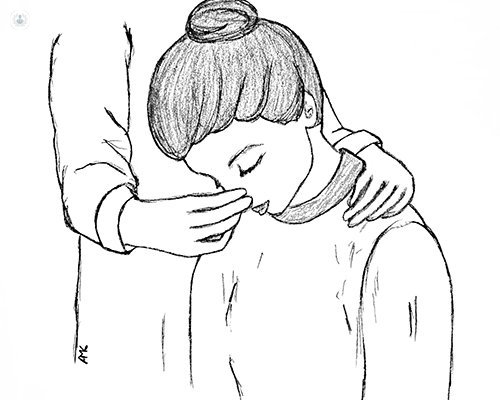What to do if I get a nosebleed
Written by:Epistaxis is a nosebleed or bleeding from the nose. It may be above (90% of cases) or later. In the first case it takes place in the area Kiesselbach, which is located in the mucosa of the nasal septum, being simpler control.
Nosebleeds is a relatively common condition that despite the striking of the problem does not usually create great impact.
Symptoms are nosebleeds or the oral cavity, and the passage of clots on blowing.
They may be associated with epistaxis other symptoms, such as headache and nasal itching among others.
In principle it carries no significant risk, but we must act quickly because it is a blood loss. In addition, it is important to see a otorrino to know why (etiology) of bleeding and what disease has caused.
Causes of epistaxis
-
 Traumatism.
Traumatism. - Erosions of the nasal mucosa.
- Strange bodies.
- Arterial hypertension.
- Coagulation disorders.
- Drugs.
- Deviated septum.
- Rhinitis.
- Vascular lesions.
- Benign and malignant tumors of the pits or sinuses.
- Cold: in the winter periods increase infections of the upper airways (sinusitis, rhinitis, etc.) and this in turn leads to increased nosebleeds.
How to act in case of epistaxis
We advise the following first aid measures to control epistaxis:
- Have / position the higher head than the heart, so that the nose is above it.
- Blow your nose gently to remove blood clots.
- Firmly tighten the soft portion of the nose with the fingers and thumb, such that both nostrils they are sealed for 5 to 10 minutes.
- Enter impregnated with ointment or petroleum jelly to properly plug the nostrils cotton.
- If after performing these maneuvers and spent time indicated episode of nasal persists bleeding, you should go immediately to an emergency department of otolaryngology for assistance specialist, control the bleeding and evaluate, since this condition may indicate other disorders.
In our service we offer extensive knowledge in diagnosing this disease, making a comprehensive assessment by anterior rhinoscopy, Endoscopic vision and complementary imaging tests if necessary (CT, MRI, etc.).
When and how to treat epistaxis
As mentioned, it should be treated when the episode persists after 10 minutes after performing the above measures.
The otorhinolaryngological treatment consists of:
- An anterior and posterior nasal packing with different materials.
- If the bleeding does not stop, local control would be done by cauterization and use of hemostatic and regional control of major bleeding by endoscopic surgery with a resolution rate close to 100%.
Preventing epistaxis
Epistaxis can be prevented with address health measures such as:
- Avoid blowing your nose hard.
- No nose picking fingers / nails.
- Control of blood pressure.
- Avoid trauma, among others.



